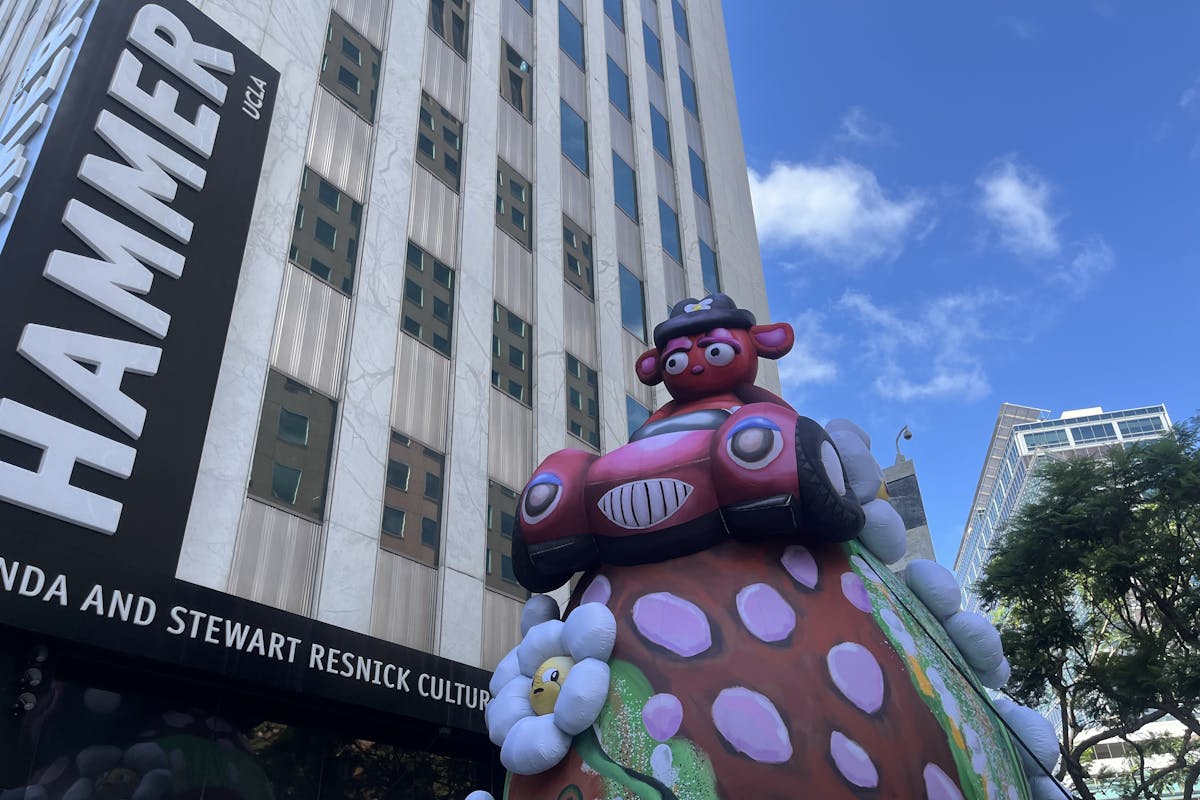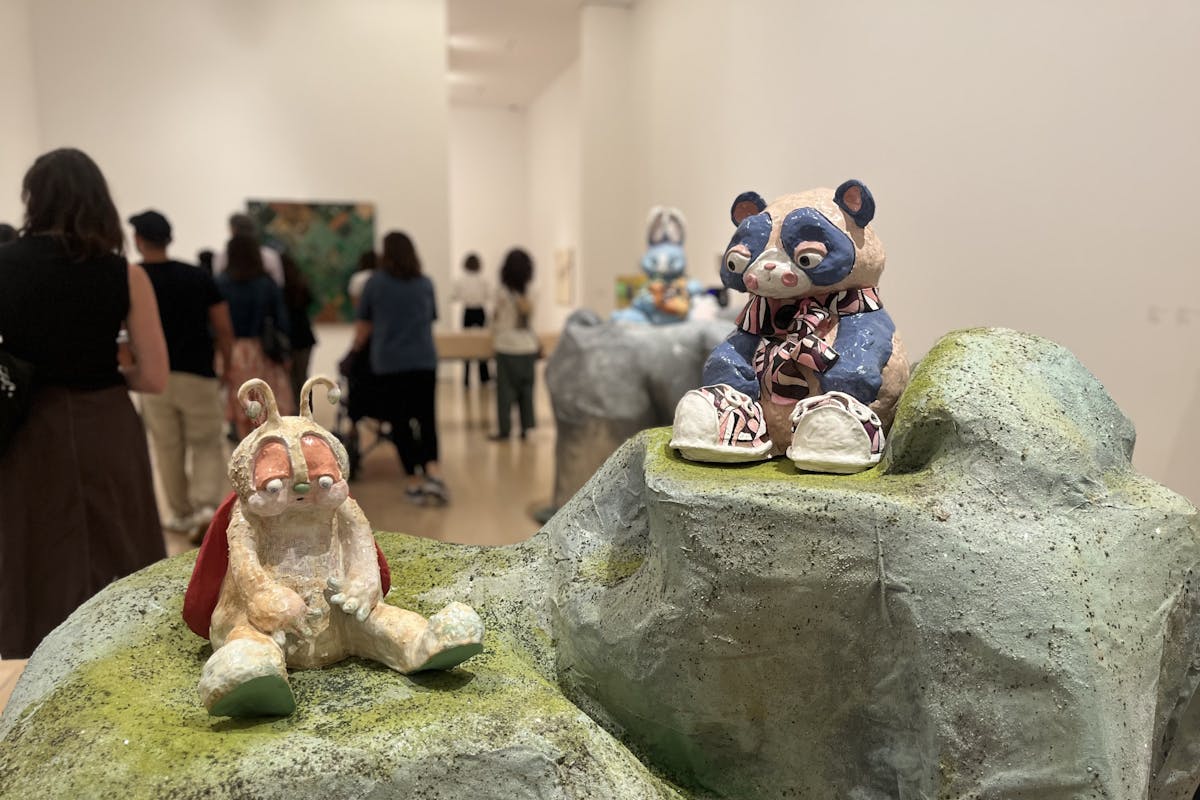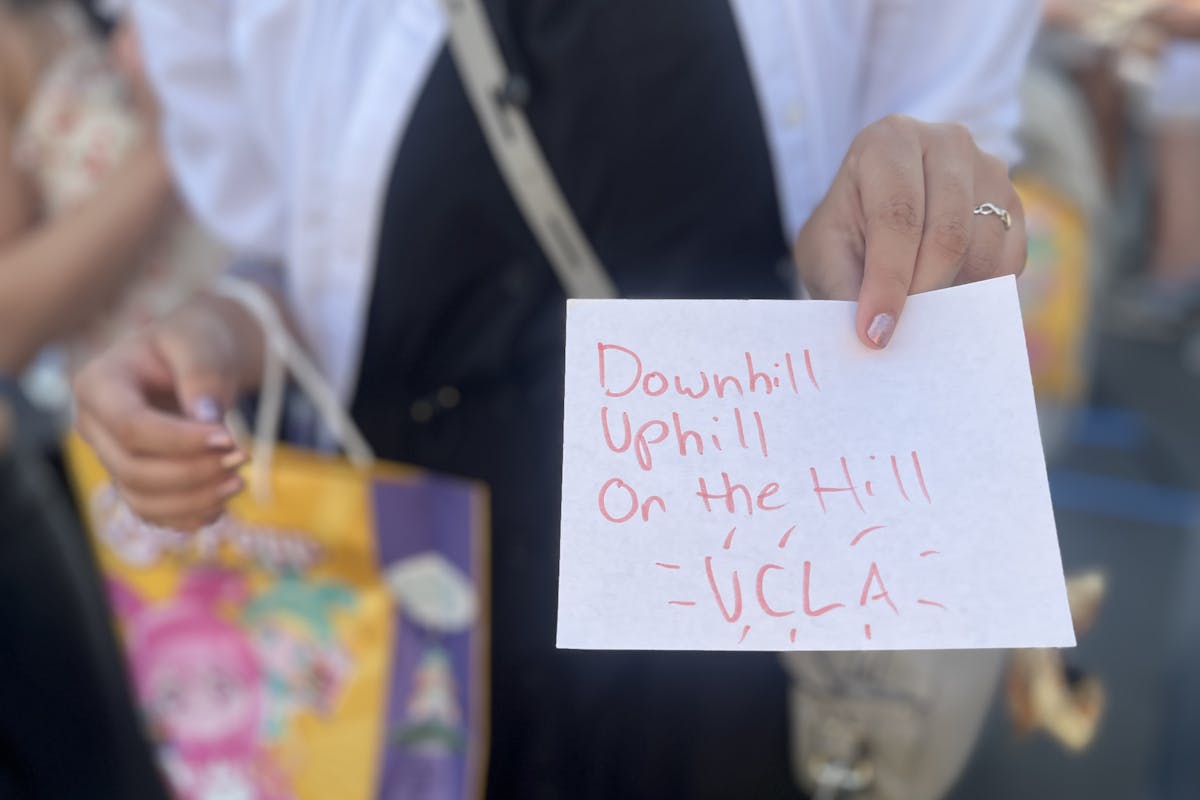Los Angeles in layers: The Hammer Museum’s biennial illustrates the city’s creative DNA

⏱️ 6-MINUTE READ
For the Hammer Museum’s 7th iteration of its beloved Made in L.A. biennale, curators Essence Harden and Paulina Pobocha have captured a representation of the city’s wide-ranging artistic practices that lends itself to close looking and repeat visits.
On view now through March 1, the 28 artists included in Made in L.A. 2025 are installed in sometimes intergenerational conversation with one another’s perspective and practice. The curators have selected previously made and newly commissioned work that bring to light a variety of thematic explorations. Some spaces in the galleries stitch together histories in layers and from the fringes, others provide hyper-minimalistic moments, and many pieces, on closer reflection, reveal imperfections and melancholy.
This year’s edition of Made in L.A. highlights emerging and under-recognized artists that inspire conversations about the past, present and future for art and artists, said Zoë Ryan, Hammer Museum director. Made in L.A. 2025 is also an example of the museum’s continuing commitment to art and ideas for a more just world, she said, and upholding freedom of expression for artists.
“Without that freedom, we are constrained from reflecting the past and envisioning what the future can be,” Ryan said.
She acknowledged the challenges Los Angeles has faced in 2025, noting that the curators have spent more than a year in the lead-up to the exhibition, visiting artist studios, talking, listening and seeking to understanding the perspectives of the people who help animate the cultural heartbeat of the city. This is an important practice for the Hammer, Ryan said.
“Museums are critical components of a thriving society,” she said. “We help communities build empathy, literacy, critical thinking a and a better understanding of the world that sustains us.”

The Hammer’s grand lobby space is now home to a rendering of Alonzo Davis’s Eye on 84, hearkening back to the creative foresight of Los Angeles as the city prepared to host the 1984 Olympics. Davis, who died in January, was one of 10 muralists from across L.A. commissioned to design murals along freeways that led into and out of the sport arenas. Originally painted along the 110 freeway, Davis’s colorful and striking heart-and-eye motifs can now be seen from Wilshire Blvd. The Hammer has also collected a series of archival photographs that showcase the other artists from the Olympics Freeway Mural Project, which included Willie Herrón III, Richard Wyatt, Kent Twitchell, Glenn Avila, Frank Romero, John Wehrle, Judy Baca, Roderick Sykes and Terry Schoonhoven.
Davis’s work was created against the backdrop of Los Angeles’ history of redlining and the construction of freeways that ripped through black and brown neighborhoods. His goal was to bring art to spaces where working class and middle-class residents of L.A. would encounter it.
“That theme of architecture, that of history and its social components and the power and control that's happening in the infrastructure in our way is something that should guide and grounds our exhibition,” Pobocha said.
Several UCLA alumni are represented in this year’s Made in L.A. including (Pat O’Neill M.F.A. ’64), Carl Cheng (M.A. ’67), Na Mira (M.F.A. ’13), Hanna Hur (M.F.A. ‘19,) and Beaux Mendes (M.F.A. ’19).

Multiple Pat O'Neill sculptures in the main gallery. Photo credit: Sarah Golonka
O’Neill is a multifaceted artist often known for his experimental films and notable for being the first person in America to earn a masters degree in moving image art. O’Neill obtained a bachelor’s degree in structural engineering at UCLA, and later an M.F.A. For Made in L.A., curators selected several sculptures he created in the 1960s, using fiberglass, steel and high-sheen automotive paint. Nearby is a collection of black-and-white images of Los Angeles he took in the 60s.

“We really fell in love with Pat's work,” Pobocha said. “These photographs are roughly contemporaneous with Ed Ruscha’s photographs of Los Angeles. I think they're really interesting, the two sides of the same coin in that Ed's photographs are very clean and crisp. Here you see a maybe dirtier, seedier side of LA. But I think in both cases, it's these images made in the 1960s that really seeded some of the mythologies of Los Angeles.”
With these archival works, O’Neill is the oldest artist represented in Made in L.A. 2025. Nearby is a newly commissioned work by Ali Eyal, the youngest artist in the exhibition. His large-scale painting reflects his early upbringing in Iraq, in the shadow of the U.S. invasion. His piece renders, in surrealistic and gothic detail, an experience Eyal had touring the 9-11 memorial in New York, and a conversation he had with an Egyptian immigrant selling hot dogs from a cart nearby.


Opening night attendees take a closer look at Ali Eyal's work. Photo credit: Sarah Golonka
Eyal’s canvas titled And Look Where I Went, is another example of themes that emerge throughout the course of the exhibition, Pobocha said. Personal or autobiographical perspectives serve as a launching off point into more universal and collective questions, often leaving a sense of unfinished or unsatisfactory attempts to understand history, she said.

Performers of Unmade during dress rehearsal. Photo credit: Jessica Wolf
Will Rawls, current faculty member in the World Arts and Cultures/Dance department in the School of the Arts and Architecture has created a movement and performance art piece for this year’s iteration of the biennale. With Rawls’ piece Unmade, most Saturdays from noon to 4 p.m. over the course of the exhibition, performers in brightly colored costumes will move through the gallery spaces, shepherding a cart laden with a selection of oddities and objects, interacting with museum attendees, reflecting on notions of resource-sharing and social choreography.

Photo credit: Jessica Wolf
Outside on the corner of Wilshire and Glendon, the Hammer has once again activated its sculpture podium, with a custom 25-foot monumental inflatable featuring a design by painter and ceramicist Alake Shilling. With Buggy Bear Crashes Made in L.A., a depressed-looking bright-pink bear behind the wheel of a bright-pink car, seems to be attempting a merge onto on Wilshire Blvd. The piece is made possible by the nonprofit Art Production Fund. Shilling is a creature creator who blends cuteness and whimsy with melancholic elements. Several of her sculptures and paintings are on view in the galleries.

Alake Shilling ceramic sculptures. Photo credit: Jessica Wolf
Shilling's work is meant to be experienced from two different perspectives, Pobocha said. At first blush, her work is light and fantastical, but closer examination reveals darker qualities--tension, sorrow, even grotesque features.

Alake Shilling ceramic sculptures. Photo credit: Sarah Golonka
Story by Jessica Wolf
Posted 10. 13. 23
Header image: Opening night attendees view a mixed-medium large-scale work by Patrick Martinez // credit Sarah Golonka

